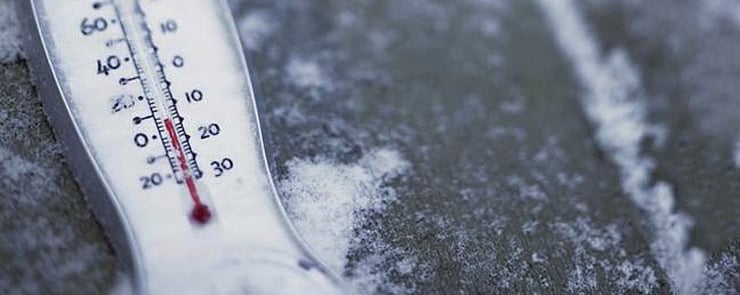
A company specializing in temperature-controlled warehousing and logistics for the food industry recognized an issue concerning a failed mechanical seal on a Goulds 3196 ammonia pump. Being that ammonia pumps are critical to maintaining temperatures at a cold storage facility, identifying the problem and appropriate solution was dire. In conjunction with the facility's Maintenance department, the engineering and service teams at Crane Engineering worked tirelessly to troubleshoot and identify the right solution.
This cold storage facility has two primary pumps used to maintain temperature throughout the facility. One of these pumps experienced catastrophic seal failure less than one year after it was replaced by the customer. To make things worse, the other critical pump wasn’t doing much better as it slowly leaked as well. The customer was in a tough situation as it was now June and the weather was really starting to heat up – making it even more difficult to maintain the cold temperatures. Time was running out.
Instead of simply installing a new seal, the team at Crane Engineering made the decision to troubleshoot and determine why the customer-installed seal failed in under one year. Oftentimes there is an underlying cause for seal failures, especially when they happen within a short period of time. It was determined that seal selection was not the issue, this style of seal is commonly used across the cold storage industry and is widely accepted due to its reliability.
The pump was disassembled by Crane Engineering's service team in Kimberly, Wisconsin. The condition of critical parts was assessed to determine if replacing the seal would fix the problem. With a number of components showing significant wear, it was determined that replacing the seal would only be a temporary solution, as the worn components directly impact the overall reliability of the seal.
A Crane Engineering Account Manager also noticed the seal’s piping plan wasn’t ideal as it sloped in the wrong direction with tight 90 degree elbows instead of gentle slopes. A proper pipe installation method was discussed and necessary changes were made to ensure adequate lubrication.

Headquarters and Service Center
Located outside Green Bay, WI
707 Ford Street
Kimberly, WI 54136
920-733-4425
OptiFlow Design and Build Center
1002 Truman Street
Kimberly, WI 54136
920-733-4425
Burnsville Service Center
12265 Nicollet Avenue
Burnsville, MN 55337
952-444-1949
Grand Rapids Service Center
26489 Industrial Blvd
Cohasset, MN 55721
952-444-1949
© Copyright 2024. Crane Engineering. All Rights Reserved. Privacy Policy.